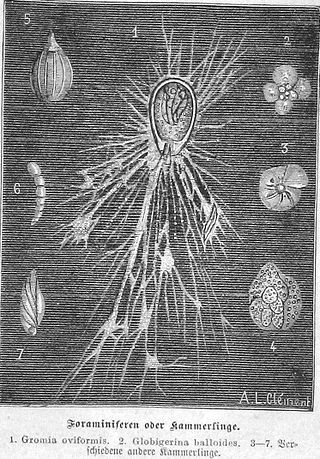
Carnegie Mellon University (CMU) is a private research university in Pittsburgh, Pennsylvania. The institution was established in 1900 by Andrew Carnegie as the Carnegie Technical Schools. In 1912, it became the Carnegie Institute of Technology and began granting four-year degrees. In 1967, it became Carnegie Mellon University through its merger with the Mellon Institute of Industrial Research, founded in 1913 by Andrew Mellon and Richard B. Mellon and formerly a part of the University of Pittsburgh.

The University of North Carolina is the public university system for the state of North Carolina. Overseeing the state's 16 public universities and the NC School of Science and Mathematics, it is commonly referred to as the UNC System to differentiate it from its flagship, UNC-Chapel Hill.
The Carnegie Classification of Institutions of Higher Education, or simply the Carnegie Classification, is a framework for classifying colleges and universities in the United States. It was created in 1970 by the Carnegie Foundation for the Advancement of Teaching. It is managed by the American Council on Education.

Dry Tortugas National Park is an American national park located about 68 miles (109 km) west of Key West in the Gulf of Mexico, in the United States. The park preserves Fort Jefferson and the several Dry Tortugas islands, the westernmost and most isolated of the Florida Keys. The archipelago's coral reefs are the least disturbed of the Florida Keys reefs.

Cooper Hewitt, Smithsonian Design Museum is a design museum at the Andrew Carnegie Mansion in Manhattan, New York City, along the Upper East Side's Museum Mile. It is one of 19 Smithsonian Institution museums and one of three Smithsonian facilities located in New York City, along with the National Museum of the American Indian's George Gustav Heye Center in Bowling Green and the Archives of American Art New York Research Center in the Flatiron District. Unlike other Smithsonian museums, Cooper Hewitt charges an admissions fee. It is the only museum in the United States devoted to historical and contemporary design. Its collections and exhibitions explore design aesthetic and creativity from throughout the United States' history.

Carnegie Mellon University in Qatar is a satellite campus of Carnegie Mellon University in Doha, Qatar. This campus is a member of the Qatar Foundation and started graduating students in May 2008. It enrolls around 400 students, has 60 faculty and postdoctoral researchers, and 90 staff members.
George Wetherill was a physicist and geologist and the director emeritus of the department of terrestrial magnetism at the Carnegie Institution of Washington, DC, US.

Gromia is a genus of protists, closely related to foraminifera, which inhabit marine and freshwater environments. It is the only genus of the family Gromiidae. Gromia are ameboid, producing filose pseudopodia that extend out from the cell's proteinaceous test through a gap enclosed by the cell's oral capsule. The test, a shell made up of protein that encloses the cytoplasm, is made up of several layers of membrane, which resemble honeycombs in shape – a defining character of this genus.
Frederic Edward Clements was an American plant ecologist and pioneer in the study of plant ecology and vegetation succession.

Protostega is an extinct genus of sea turtle containing a single species, Protostega gigas. Its fossil remains have been found in the Smoky Hill Chalk formation of western Kansas, time-equivalent beds of the Mooreville Chalk Formation of Alabama and Campanian beds of the Rybushka Formation. Fossil specimens of this species were first collected in 1871, and named by Edward Drinker Cope in 1872. With a total length of 3.9 metres (13 ft), it is the second-largest sea turtle that ever lived, second only to the giant Archelon, and one of the three largest turtle of all time along Archelon and Gigantatypus.

Henry Edward Crampton was an American evolutionary biologist and malacologist who specialized in land snails. Crampton undertook the first major study of evolution in nature in his research in the Society Islands. Crampton made twelve separate expeditions over the course of his career to Moorea near Tahiti to study the land snail genus Partula, while years more were spent measuring and cataloguing his specimens. In all, he dedicated nearly half-a-century to the study. Crampton taught as a professor at Columbia University and Barnard College from 1904 to 1943. He also worked as a curator at the American Museum of Natural History.
The Carnegie Institution for Science, also known as Carnegie Science and the Carnegie Institution of Washington, is an organization in the United States established to fund and perform scientific research. The institution is headquartered in Washington, D.C. As of June 30, 2020, the Institution's endowment was valued at $926.9 million. In 2018 the expenses for scientific programs and administration were $96.6 million. Eric Isaacs is president of the institution.

Gromia sphaerica is a large spherical testate amoeba, a single-celled eukaryotic organism and the largest of its genus, Gromia. The genus itself contains about 13 known species, 3 of which were discovered as late as 2005. It was discovered in 2000, along the Oman margin of the Arabian sea, at depths around 1,163 to 1,194 meters. Specimens range in size from 4.7 to 38 millimeters in diameter. The test is usually spherical in shape and honeycombed with pores. There are filaments on the bottom of the organism, where it is in contact with the seafloor, and it is mostly filled with stercomata.

Maxine Frank Singer is an American molecular biologist and science administrator. She is known for her contributions to solving the genetic code, her role in the ethical and regulatory debates on recombinant DNA techniques, and her leadership of Carnegie Institution of Washington. In 2002, Discover magazine recognized her as one of the 50 most important women in science.

Paul Bartsch was an American malacologist and carcinologist. He was named the last of those belonging to the "Descriptive Age of Malacology".

Gromiida is an order of cercozoans. It is the only order in the class Gromiidea.
Stercomata are extracellular pellets of waste material produced by some groups of foraminiferans, including xenophyophoreans and komokiaceans, Gromia, and testate amoebae. The pellets are ovoid (egg-shaped), brownish in color, and on average measure from 10-20 µm in length. Stercomata are composed of small mineral grains and undigested waste products held together by strands of glycosaminoglycans.
Gromia dubia is a species of testate rhizarian animal in the family Gromiidae. It is known from a single specimen discovered in 1884 by Gruber, and no other specimens have been found. Gruber did not actually make a proper description of the species itself.










